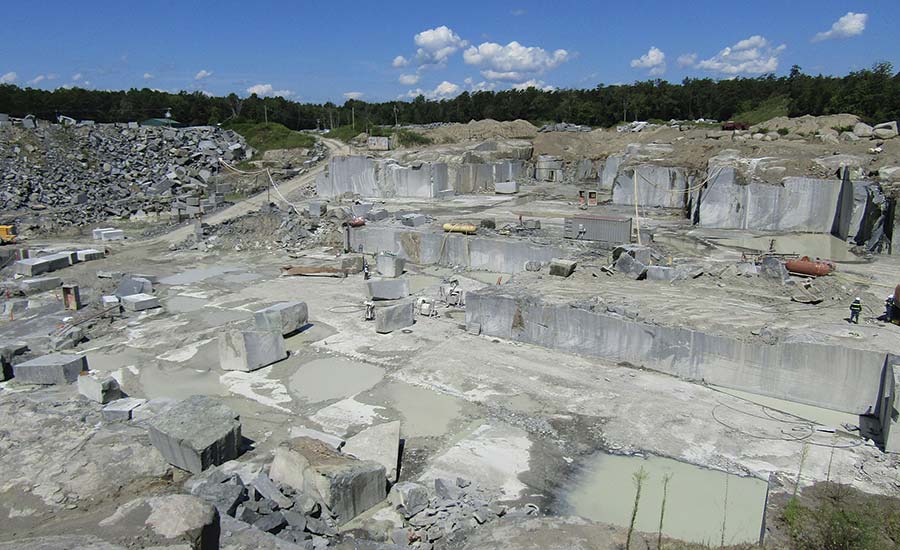Opening All-natural Treasures: Granite Quarries in South Africa Introduced
Opening All-natural Treasures: Granite Quarries in South Africa Introduced
Blog Article
Introducing the Mysteries of Granite Quarrying: Where Stamina and Sophistication Meet
The globe of granite quarrying is a world where the raw strength of nature merges with human creativity to create structures that stand the examination of time with an air of style. From the depths of quarries to the meticulous polishing in workshops, the process of transforming granite into building marvels is a complicated dance of tradition and technology. As we peer into the depths of this old craft, we start to uncover the covert complexities that form the extremely significance of our developed atmosphere.
The Beginnings of Granite Quarrying
In the annals of building history, the beginnings of granite quarrying are shrouded in a tapestry of ancient craftsmanship and geological wonders. Dating back to old Egypt and Mesopotamia, the removal of granite from quarries marked the beginning of a journey that would at some point lead to the development of a few of the world's most renowned frameworks.
Granite quarrying's origins can be mapped to the skilled craftsmens who identified the stone's toughness and visual allure. With a mix of primitive tools and large determination, these very early quarry employees discovered granite blocks that would certainly come to be the foundation of people.
As people developed, so did the methods of quarrying granite. The Romans, renowned for their design prowess, established advanced approaches for extracting granite to construct monuments, temples, and roadways that stood the examination of time.
The tradition of these ancient quarrying techniques remains to shape contemporary design, with granite staying an icon of toughness and sophistication in construction tasks around the globe. (granite quarries in south africa)
Tools of the Quarrying Trade
The advancement of granite quarrying methods from old civilizations to modern times highlights the vital duty played by the devices of the quarrying profession in forming the market's methods. In ancient times, quarrying devices were basic, often containing knives, hammers, and wedges made from products like bronze or iron. These tools required significant workforce and time to extract granite blocks from quarries.

Additionally, the introduction of pneumatic devices and high-powered machinery has actually considerably decreased the physical labor needed in quarrying operations, improving worker safety and performance. As the quarrying market proceeds to introduce, the devices of the profession continue to be at the forefront of driving development and shaping the future of granite removal.
Removing Blocks of Granite
Using special info accuracy equipment and progressed methods, the removal of granite blocks from quarries has become a sophisticated process in the modern quarrying sector. Controlled blasting methods are after that employed to damage apart the granite right into workable sections.

Sprucing Up and Completing Methods
To accomplish a remarkable surface on granite blocks, competent craftsmens utilize a collection of careful sprucing up and ending up strategies. After the initial extraction and forming processes, the granite blocks go through a detailed sprucing up phase to improve their natural appeal and durability.
Along with sprucing up, ending up strategies are put on further fine-tune the granite's Related Site appearance. These methods may consist of flaming, honing, or brushing, each offering special appearances and surfaces to fit various visual preferences. Flaming, for instance, includes subjecting the granite surface to heats to create a rough, distinctive surface, ideal for outdoor applications where slip-resistance is important. Refining, on the other hand, offers a matte surface that is smooth to the touch, best for indoor kitchen counters and flooring. By carefully choosing and applying these brightening and ending up methods, craftsmens can change raw granite obstructs into beautiful items that display both stamina and style.

Environmental Effect and Sustainability
With the expanding focus on ecological consciousness in the industry, granite quarrying methods are progressively scrutinized for their effect on natural deposits and long-lasting sustainability. Quarrying for granite can have significant ecological ramifications. The removal process frequently includes the use of heavy machinery, nitroglycerins, and big quantities of water, causing habitat devastation, dirt erosion, and water contamination. In addition, the transport of granite from quarries to processing facilities generates carbon discharges, even more adding to ecological degradation. granite quarries in south africa.
To minimize these influences and ensure sustainability in granite quarrying, sector stakeholders are adopting different steps. Implementing sophisticated other modern technologies to minimize power intake and water use, recovering quarried land for ecological restoration, and advertising responsible sourcing practices are some strategies being used. Qualifications such as the Woodland Stewardship Council (FSC) and the Leadership in Power and Environmental Style (LEED) aid consumers identify ecologically friendly granite items.
Verdict
To conclude, granite quarrying is a process that requires specialized devices and strategies to remove blocks of granite and polish them to a high level of coating. While the ecological influence of quarrying can be considerable, initiatives are being made to boost sustainability practices in the market. On the whole, granite quarrying is a delicate balance between harnessing the toughness and elegance of this natural stone while minimizing its influence on the setting.
Report this page